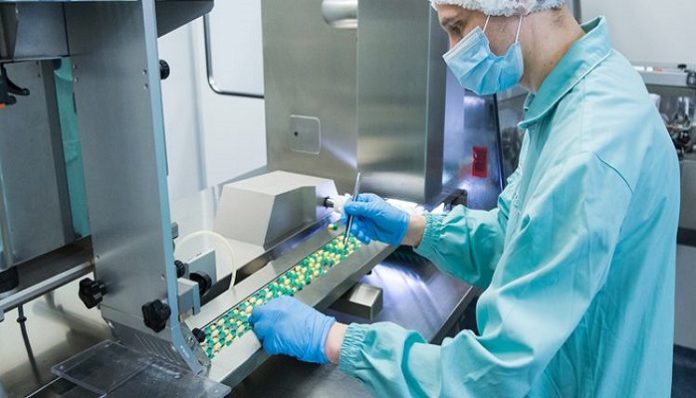The needs of manufacturing facilities, tools, and procedures must be suitable for this new environment as the focus of new drug research shifts toward innovative medicines and vaccines. Young biotech’s face new hurdles when they scale up production, while more seasoned pharma may need to make a change to guarantee that facilities are prepared for novel working methods.
The importance of adhering to good manufacturing and distribution practises (GMP and GDP) and having a quality system that is appropriate for the task at hand can be seen across all of this. Without taking into account what is necessary, what might be unnecessary, or how processes and systems will be verified over time, engineering or rebuilding facilities could result in expensive corrective action and bottlenecks in bringing essential and high-end new goods to market.
Biopharma businesses need to be more cost-conscious than ever before in how they run and oversee their manufacturing and supply chain activities, in addition to modifying current sites or designing new facilities targeted toward the development of modern drugs. This is a consequence of the pressure on pricing for ongoing product lines and the relative cost of developing medicines.
Setting up an environment where quality can (and must) act as a real-time facilitator of first-class manufacturing, rather than a controller and then a corrector of production and supply chain delivery is necessary to prepare for efficient, streamlined, and compliant output at scale in a cost-sensitive, biopharmaceutical-first world.
How may that appear then?
Increasing the importance of quality in production
In the past, several pharmaceutical quality control measures had been implemented only to aid in passing inspections rather than to promote innovation by introducing inherent value into the production process. In these situations, systems existed outside of manufacturing, producing documentation after the event rather than being a crucial component and facilitator of proceedings.
Manufacturers now have the chance to be more selective about the measures they implement to ensure and monitor quality and to deeply integrate quality management into real-time operations, where it can more directly provide value.
By digitalizing workflow management and implementing intelligent process automation, this gives an opportunity to be wiser about the degree and range of detail recorded, for example, and to aim at least some of the monitoring, analysis, and issue flagging toward allowing internal efficiency benefits.
Adopting the spirit of the law rather than its letter
The developing regulatory environment, which is moving to risk management and health authority approval based on a given risk profile in an effort to be more supportive of innovation, is one of the factors driving the change in quality in biopharmaceutical manufacturing. This is in contrast to the strategy from more than 20 years ago, which valued thoroughness over efficiency and favoured the indiscriminate recording, vetting, and validation of every minor detail against a list of requirements.
Today, biopharma manufacturers can create their facilities and procedures to be more fit for purpose, in line with the respective risk, as long as they respect and demonstrate commitment to GMP and can illustrate they are doing everything to try to limit any risk for the patient (the eventual objective of pharma safety and quality measures). At the moment, authorities are making the appropriate adjustments to their evaluations and inspection standards, including through the onboarding of new waves of inspectors.
Optimization of processes (and portfolios)
Manufacturers have a chance to exploit measures and systems to their own operational benefit as a result of the relaxing of rigid quality-related regulatory standards, of course, without compromising safety. When they implement digital solutions, they should do so to allow process innovation and optimization rather than just to mimic outdated, manual processes.
Companies must first, however, brush up on their process knowledge so they can evaluate the risk of doing something differently and challenge current methods of accomplishing it. That could entail revising routine procedures to be more effective or considering whether some products should even be produced at all, such as lower-margin/loss-making assets, in which case subcontracting might be a better option.
The chance now is unquestionably to enhance procedures, avoid problems in the first place, and report information and data to important decision-makers so that inefficient procedures can be redesigned to be more effective.
Considerations for organisations
Digitalization is only one aspect of unlocking the benefits; organisational characteristics also need to be taken into account. For instance, if quality teams typically work during regular business hours, such as 8 a.m. to 5 p.m., but plants operate 24/7 over 3 shifts, it implies that quality will be ill-equipped to anticipate problems before they arise or to act quickly if an incident happens while the function is offline.
Putting quality on the shop floor and making the function more fundamental to production processes would be the best course of action in this situation. This would enable more constant monitoring, a more active real-time role in solutions, and the documentation of choices as they are made, saving a protracted quality review after the fact. The probability of a timely deployment will thereafter rise as a result.
Embracing quality through design will help biotech companies reach commercial scale
With all of this, new biotech’s that are transitioning from lab-scale production to commercial-scale manufacturing have a better edge because they aren’t impacted or unfairly hampered by legacy quality methods. They have the opportunity to incorporate quality by design (QbD) building as they set up full production facilities, leveraging cutting-edge best practises and employing risk management to ascertain what scaled-up production should resemble in the 2020s and what procedure weak points to avoid to accomplish frictionless verification.
Moving right to fully integrated and digitalized processes can significantly increase the likelihood of success by offering clear visibility across production and generating the potential for automatic alerts, reminders, and prompts based on specific parameters to keep everything fluid and dynamic. These processes also allow for real-time data to flow to where it’s needed and trigger next actions.
Let good data flow to optimise the integration of digital processes
Companies now have a wide range of tools at their disposal to operate as efficiently as possible and to collect all the data necessary to satisfy regulators and auditors, from equipment control software and building management systems to sample selection and certification of analysis systems, process monitoring data, and building management systems.
Companies can also connect their present system to historical databases as they work to improve their proactive quality management strategies and support ongoing innovation in order to identify patterns in deviations and incidents and take proactive precautionary action to ensure they don’t happen again. The potential for improvement also increases with the degree of interconnectedness of activities, systems, and tasks. Production and quality teams have the best opportunity to remain ahead by connecting historical event data to risk management for process optimization and ERP systems for materials management.
Biopharma firms cannot afford to be hampered by excessive red tape, cumbersome procedures, or siloed teamwork when there is so much amazing innovation occurring at the level of biopharma products and so much price and cost awareness in today’s markets. Fortunately, it doesn’t have to be that way if the appropriate guidance is followed when practicing.





















